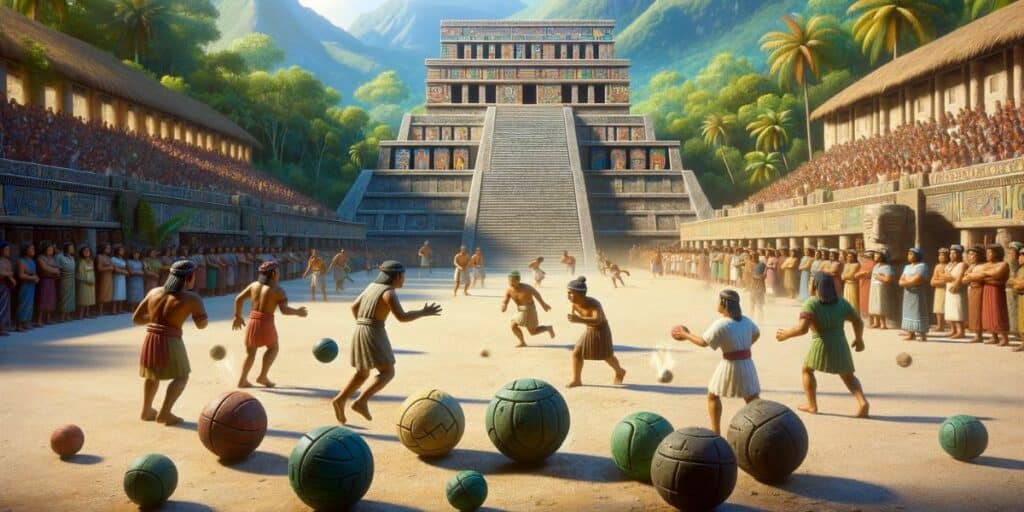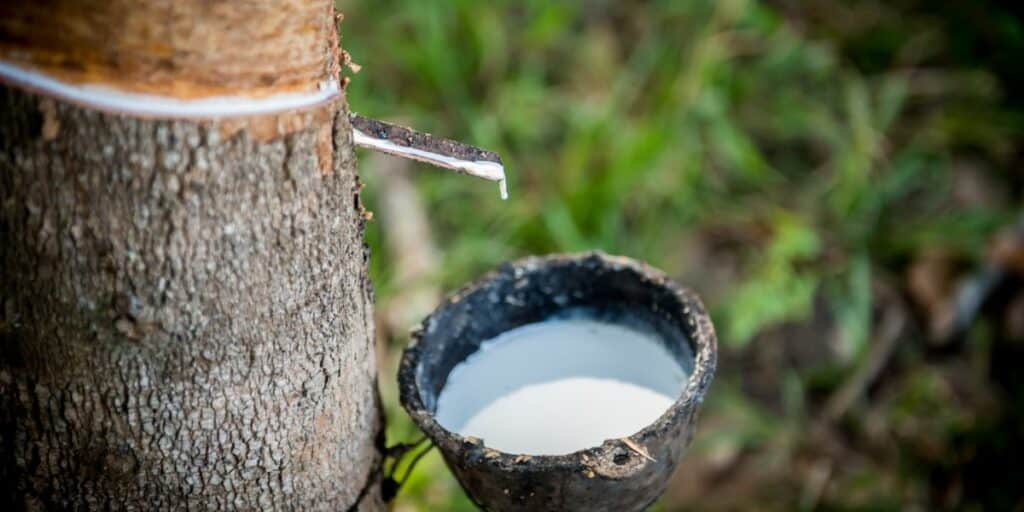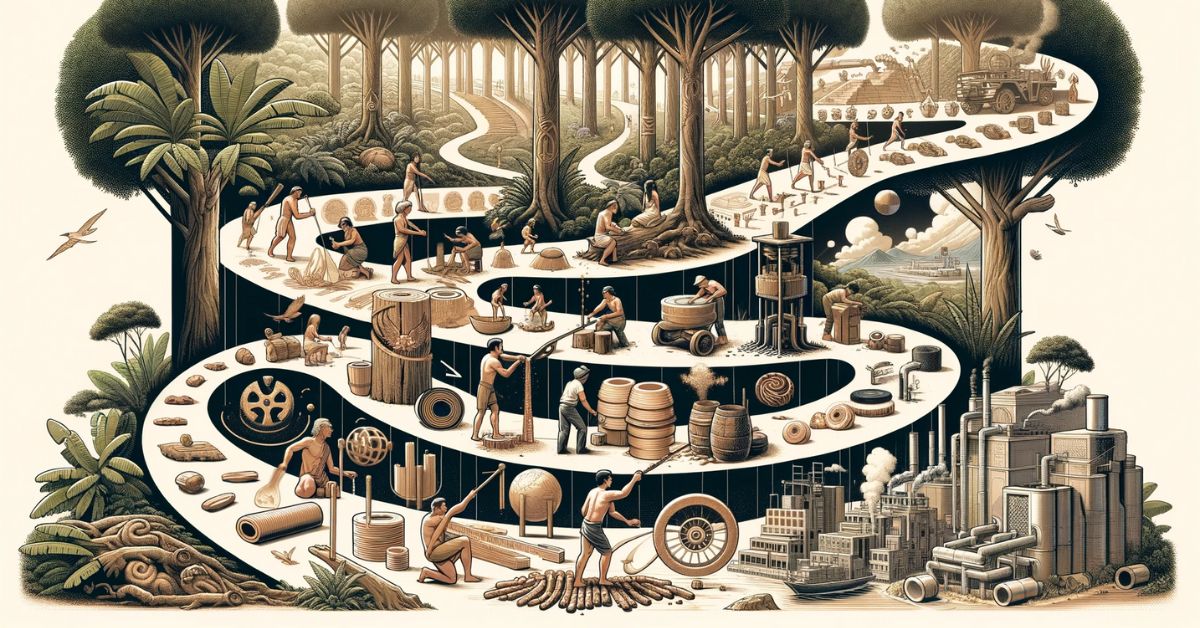The story of rubber is a fascinating journey through time, from its ancient origins to its pivotal role in modern society. This comprehensive article delves into the rich history of rubber, exploring its initial discovery, early uses, and the evolution that has made it indispensable in our daily lives.
“This particular project is very exciting because the Mesoamerican rubber ball game was such a fundamental ritual and political event in these societies, and the ball game could not have developed without inventing the technology to process rubber.”
Dr. Dorothy Hosler.
Rubber. Our cars would certainly give a worse ride without the stuff. But what is rubber, exactly? And where does it come from?
Ancient Rubber
Until recently, modern thinkers believed rubber originated in 19th-century Europe. According to a Tech Talk article published by Massachusetts Institute of Technology on Wednesday, July 14, 1999, Professor Dorothy Hosler, Assistant Professor Sandra Burkett, and an undergraduate named Michael Tarkanian learned that the Mayan people in ancient Mesoamerica made and used rubber as long ago as 1600 BCE.
Also Read
The Dawn of Rubber: Ancient Mayan Innovations
Rubber’s history begins with the Ancient Mayans, a civilization renowned for their ingenuity and creativity. They were the first to discover and utilize rubber, tapping into the sap of rubber trees to produce a versatile and durable material.
The Mayans ingeniously used rubber for various purposes, from games and religious observances to creating tools and other practical items. This early exploitation of rubber’s unique properties laid the groundwork for its widespread use in subsequent cultures and civilizations.
Cultural and Practical Uses of Rubber in the Ancient World
The ancient Mayan people used latex to make rubber balls and hollow human figures, and bindings were used to secure axe heads to their handles and other functions.

Latex is the sap of various plants, most notably the rubber tree. When exposed to the air, it hardens into a springy mass.
The Mayans learned to mix the rubber sap with the juice from morning glory vines to become more durable and elastic and not get quite as brittle.
Both the rubber tree and the morning glory were important plants to the Mayan people- the latter being a hallucinogen and a healing herb. The two plants tended to grow close together. Combining their juices, a black substance about the texture of a gum-type pencil eraser was formed.
The rubber balls were about the size of a beach ball and weighed over 15 pounds (7 kilograms). These were used in an important ritual game called Tlachtlic. The game was a cross between football and basketball but had religious significance as recorded in the Popul Vuh, a Mayan religious document.
Spanish invaders in the sixteenth century reported that the game also involved gambling for various possessions, including land and slaves. It is believed that the game ended in a human sacrifice at least some of the time. Versions of the game were played in the Middle American region, ranging from southern Arizona to northern South America.
Native peoples in the region still make rubber in the same way.
Vulcanized Rubber: The Industrial Revolution and the Rubber Boom
The story of rubber took a significant turn with the age of exploration and the subsequent global trade networks. Fascinated by this unique material, European explorers and traders introduced rubber to the Old World. This marked the beginning of rubber’s global journey, spreading its use and igniting interest in further developing its potential.
In 1736, several rolled sheets of rubber were sent to France, which fascinated those who saw it. In 1791, an Englishman named Samuel Peal discovered a means of waterproofing cloth by mixing rubber with turpentine. English inventor and scientist Joseph Priestly got his hands on some rubber and realized it could be used to erase pencil marks on sheets of paper.
The Industrial Revolution was a pivotal moment in the history of rubber.
The invention of vulcanization revolutionized the rubber industry. This process involved heating rubber with sulfur, transforming rubber into a more durable and elastic material suitable for various industrial applications. The vulcanization of rubber marked the beginning of the rubber boom, with its demand skyrocketing in industries ranging from automotive to footwear and beyond.
Charles Goodyear, an American whose name graces the tires under millions of automobiles, is credited with the modern form of rubber.
Before 1839, rubber was subject to weather conditions. If the weather was hot and sticky, so was the rubber. In cold weather, it became brittle and hard.
Goodyear’s recipe, vulcanization, was discovered when a mixture of rubber, lead, and sulfur was accidentally dropped onto a hot stove. The result was a substance that wasn’t affected by weather and would snap back to its original form if stretched. The process was refined, and rubber materials increased as well.
This new rubber was resistant to water and chemical interactions. It did not conduct electricity, so it was suited for various products. The process of making the rubber product improved as time went by. Various chemicals are added before the mix is poured into molds, heated, and cured under pressure.
Rubber Facts:
The process of vulcanization, which makes rubber more durable and heat resistant, was discovered accidentally by Charles Goodyear in 1839. Goodyear was experimenting with rubber in an attempt to make it more useful, as natural rubber is sticky in hot weather and brittle in cold weather. One day, he accidentally dropped a mixture of rubber and sulfur onto a hot stove. Instead of melting, the rubber-sulfur mixture charred and became much tougher. This serendipitous discovery revolutionized the rubber industry, making rubber a more practical material for a wide range of uses.
An Englishman named Sir Henry Wickham collected about seventy thousand rubber tree seeds in Brazil in 1876. He took them to the East Indies, where he started rubber plantations.
In 1877, an American named Chapman Mitchell learned to recycle used rubber into new products.
Rubber is harvested from the latex of rubber trees, and the process of extracting this latex is quite unique. Workers make diagonal incisions into the bark of the tree, which causes the latex to flow out — a process often described as the tree 'weeping.' This method of tapping doesn't harm the tree, allowing it to continue producing latex for many years. A single rubber tree can be tapped for latex for up to 28 years, making it a sustainable resource. Interestingly, a rubber tree needs to be about six years old before it can be tapped for latex

Modern Rubber
Rubber has continued to evolve in the modern era, with synthetic rubber and various rubber composites being developed to meet contemporary society’s growing and diverse demands.
These advancements have expanded rubber’s applications, making it a key component in various sectors such as transportation, healthcare, and consumer goods. The future of rubber holds even more possibilities, with ongoing research focusing on sustainability and eco-friendliness, ensuring that this ancient material continues to play a vital role in our technological and daily advancements.
The Rise of Synthetic Rubber
Today, about three-quarters of the rubber in production is synthetic from crude oil. World War II cut the United States off from rubber supplies worldwide, and they stepped up production of synthetic rubber for use in the war effort.
There are about 20 synthetic rubber grades; the intended end use determines selection.
This diversity allows for tailored properties like enhanced durability, elasticity, or resistance to temperature and chemicals, making synthetic rubber an invaluable resource in various applications.
The production of synthetic rubber involves a fascinating chemical process. It begins with combining petroleum byproducts, butadiene, and styrene in a reactor filled with soap suds. This mixture results in a milky latex liquid, which undergoes coagulation to form rubber “crumbs.” These crumbs are then purchased by manufacturers, who melt and mold them into various products.
Natural Rubber Market Outlook
In contrast to synthetic varieties, natural rubber remains limited to a single type, sourced exclusively from the rubber plant. Culturing natural rubber is geographically restricted to hot, damp regions near the equator, making Southeast Asia the primary hub for its production.
Countries like Malaysia, Thailand, and Indonesia dominate the market, although Indonesia has recently declined output. This reduction has led to the emergence of new rubber plantations in Africa, aiming to meet the continuous global demand for natural rubber.
The cultivation and harvesting of natural rubber are labor-intensive processes heavily reliant on suitable climatic conditions.
The rubber is tapped from the trees to ensure sustainability and minimal harm to the plant. This practice has been refined over decades. The harvested latex is then processed and refined for various uses, ranging from tires to medical equipment.
The unique properties of natural rubber, such as its high elasticity and resilience, make it irreplaceable in certain applications despite the advances in synthetic rubber technologies.
Rubber in the modern era is characterized by a dual path. On the one hand, synthetic rubber, with its diverse grades and wide-ranging applications, represents human ingenuity in creating alternatives that meet specific industrial needs. On the other hand, natural rubber remains a vital resource, its production intricately tied to specific geographic regions and ecological conditions.
Together, these two rubber forms play a pivotal role in our daily lives, driving innovations and meeting demands across a spectrum of industries worldwide.
In conclusion, the history of rubber is a testament to human ingenuity and adaptability. Rubber has continually demonstrated its versatility and importance from its ancient beginnings with the Mayans to its indispensable role in modern life. This journey through time highlights rubber’s historical significance and its potential to contribute to future innovations and sustainable solutions.






